Preventing woodpeckers from drinking the nectar solution in a hummingbird feeder is challenging. Anything that scares away woodpeckers is likely to frighten hummingbirds, too, but you can discourage woodpeckers from landing on a feeder by making it difficult for them to perch. You can also tempt them away from a hummingbird feeder by installing feeders and foods especially for them.
Problem Woodpeckers
Feeding ports attached to tubes prevent most birds from reaching the nectar solution in a hummingbird feeder, but they don't deter woodpeckers. Hummingbirds and woodpeckers have long tongues, which help them eat food other birds can't reach. Hummingbirds push their tongues deep inside flowers to sip nectar, and woodpeckers insert their tongues in the holes they make in bark and wood with their sharp beaks.
Woodpeckers that are known to drink from hummingbird feeders include downy, red-bellied, gila, acorn
Hummingbird Feeders
- Hummingbirds usually hover as they feed, which enables them to feed at perch-free feeders, but woodpeckers are larger and heavier than hummingbirds and must land before feeding. To prevent woodpecker landings, avoid using a hummingbird feeder with a sturdy perch, or remove the perch from the feeder.
- If woodpeckers aren't able to perch on a feeder, they may land on its top and lean down to reach the tubes leading to the nectar solution. Nix this behavior by placing a CD or other flat object with a hole in its center over the top of the feeder so woodpeckers can't land on it.
- Because woodpeckers are most attracted to hummingbird feeders with wide feeding ports, select a feeder with narrow ports that only hummingbirds can access.
Woodpecker Foods and Feeders
Providing woodpeckers with their own food sources can make them less interested in a hummingbird feeder as well. Downy woodpeckers and others eat grains, suet, black oil sunflower seeds, a range of insects and their larvae, and fruit. including berries and crushed peanuts.
Woodpeckers visit various types of feeders, such as bottom suet feeders, fruit feeders and hopper feeders. These feeders also attract bluebirds, chickadees, titmice, starlings, orioles, jays, house finches and other birds that may live in your area. Bottom suet feeders allow some birds, such as woodpeckers and nuthatches, to hang upside down when feeding as they do in the wild.
Related Articles
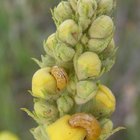
What Foods Attract Maggots?
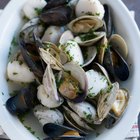
How do Mussels Protect Themselves?
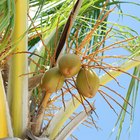
Which Nuts Are Alkaline Forming?

Places to Pick Wild Blueberries in ...

List of Wild Edible Plants & Berries in ...
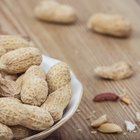
Can Peanut Shells Be Used for Compost?
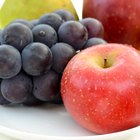
Raw Food Diet and Parasites

Are Farm Raised Mussels & Clams Healthy ...

Types of Flat-Bottomed Boats
Fun Things to Do in Mankato MN

How to Take Care of Raspberry Bushes
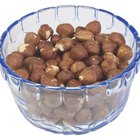
What Kinds of Nuts Don't Grow on Trees?
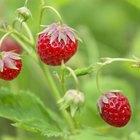
What Causes Strawberries to Mold?
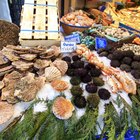
What Shellfish Are Edible?
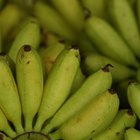
List of Tropical Fruits

Poisonous Household Spiders in ...
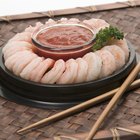
What Is the Dark Line on a Boiled ...

How to Freeze a Prickly Pear Cactus

Does a Kiwi Turn Brown?

The Disadvantages of Vermicompost
References
Writer Bio
A graduate of Leeds University, Jenny Green completed Master of Arts in English literature in 1998 and has been writing about travel, gardening, science and pets since 2007. Green's work appears in Diva, Whole Life Times, Listverse, Earthtimes, Lamplight, Stupefying Stories and other websites and magazines.